Shadow banning is a way to censor people on social media sites without them knowing. It has been talked about and debated a lot in the past few years. This is when a user’s content is limited or removed without their knowledge, making their posts less visible or even completely invisible to other users. The issue of transparency and fairness in the digital age is at the heart of the shadow banning debate. This introduction will talk about what shadow banning is, how Facebook has used it in the past, and how important it is to know how it affects users and online communities.
How Facebook Shadow Banning Works
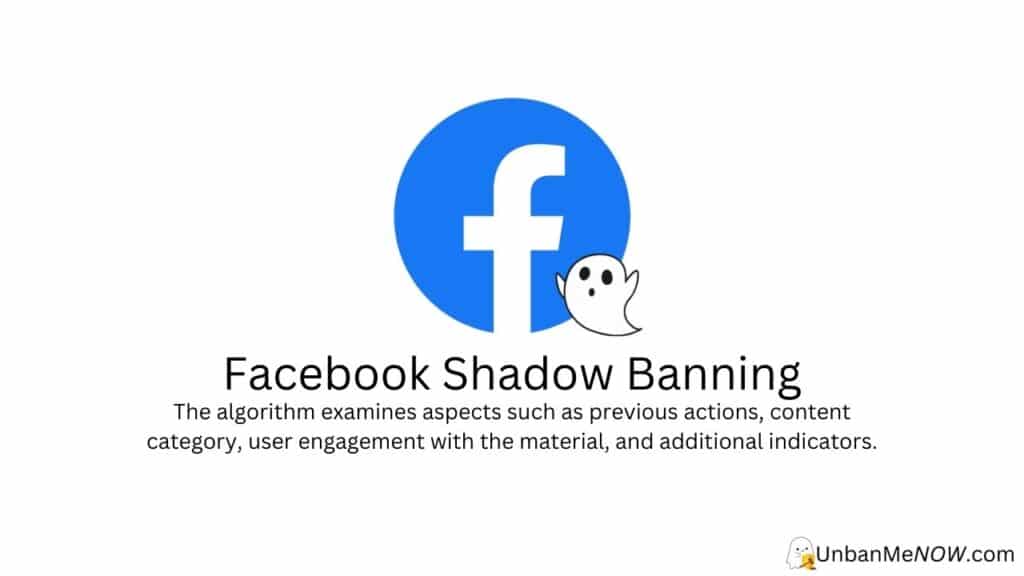
Facebook uses an algorithm to decide which posts and users can be seen. For relevance and importance, the algorithm looks at things like past behavior, the type of content, how the user interacts with it, and other signals. The goal is to put the most reliable information at the top.
Shadow banning makes a user’s content less visible by making it stand out less on the site. This can be done by making posts less visible in newsfeeds, stopping notifications, or limiting the amount of content that can be shared. The goal is to stop harmful or spammy content from spreading and to limit how much damage they can do to the platform.
Identifying Potentially Harmful Content and Users
Facebook uses both automated systems and real people to find potentially dangerous content and users. Machine learning algorithms are used by automated systems to look for spam, hate speech, and other types of harmful content in the text, images, and videos that are posted on the platform. Human moderators then look at the content that has been flagged to decide whether or not it breaks Facebook’s community standards.
Users who do bad things, like post spammy or abusive content, can also be flagged so that Facebook’s moderators can look into it. If a user’s actions are thought to go against Facebook’s community standards, they could be “shadow banned,” which would make it harder for them to reach other people on the platform.
The Difference between Shadow Banning and Outright Banning
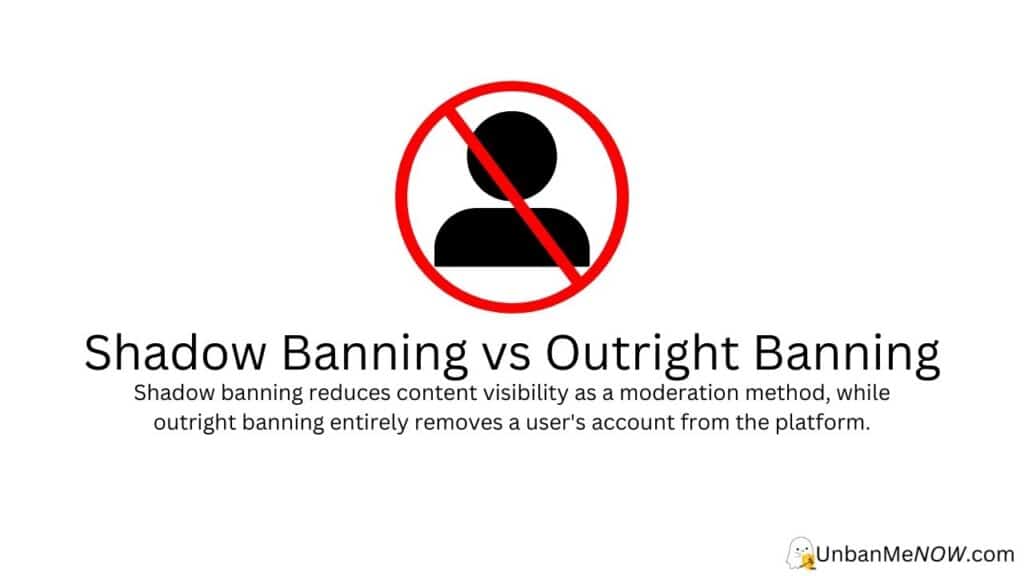
Shadow banning is a form of moderation that makes it less likely that other people will see a user’s content by making it less visible. On the other hand, a user’s account is completely removed from the platform when they are banned outright. Users are usually only banned outright when they do something very bad or abusive, like spreading hate speech or spam.
The main difference between shadow banning and outright banning is that shadow banning is a less severe form of moderation that lets the user keep using the platform, but only in a limited way. When a user is banned outright, they can no longer use the platform at all, effectively cutting them off from the Facebook community.
The Impact of Shadow Banning on Users
The goal of shadow banning is to stop people from sending spam, being rude, or doing other things that aren’t appropriate on the platform. Shadow banning, on the other hand, can have a lot of bad effects on users.
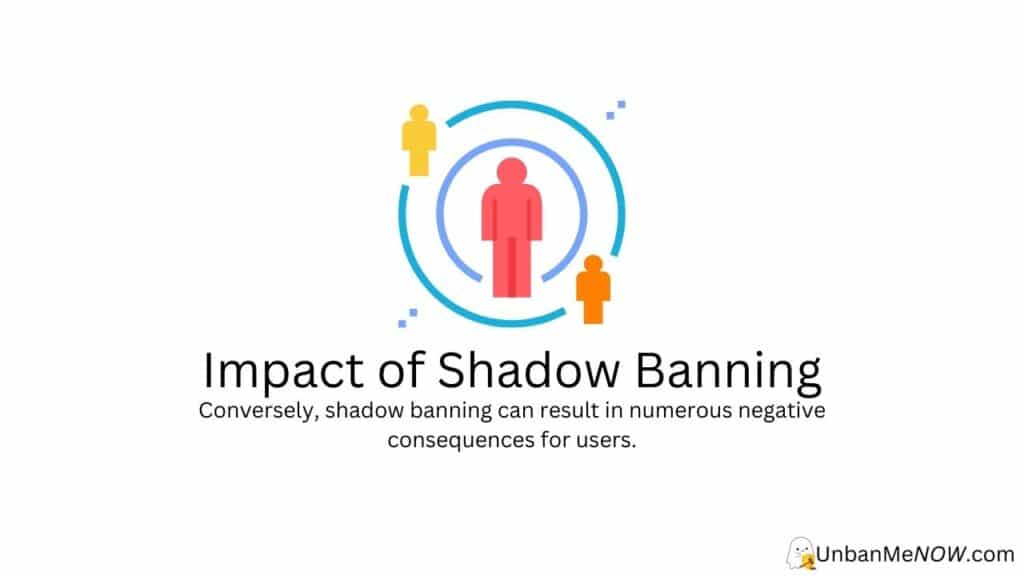
Reduced Visibility of Content and Posts
One of the most important effects of shadow banning is that content and posts become less visible. When a user is shadow banned, their posts don’t show up for their followers or other users on the platform. This means that their content is not seen by the people they want to reach, which can severely limit their reach and impact.
Decreased Engagement and Interaction
Another effect of shadow banning is less interaction and engagement. When other people can’t see a user’s content, it’s less likely to get likes, comments, or shares. This can make the user feel like their efforts are going to waste and make them less likely to try again.
Psychological Effects on Users
Shadow banning can also have effects on users’ minds. Some of these are:
- Frustration: People who have been shadow banned may feel frustrated because they don’t know why other people can’t see their content. Even though they haven’t been told how they broke the platform’s rules, they may feel like they are being punished unfairly.
- Confusion: Shadow banning can also cause confusion, since users don’t know why other people can’t see their content. They might feel like they did something wrong but don’t know what it is. This can be frustrating, especially for people who use the platform to reach their audience.
- Feelings of Isolation: Last, shadow banning can make people feel alone. When a user’s content can’t be seen by other people, they may feel like they’re being left out of the community. This can make you feel alone and disconnected from the other people on the platform.
Controversies and Criticisms Surrounding Facebook’s Shadow Banning Practices
Facebook has been accused of many controversies related to shadow banning. There have been claims of political bias, lack of openness and accountability, fears of censorship, and worries about how this affects freedom of speech.
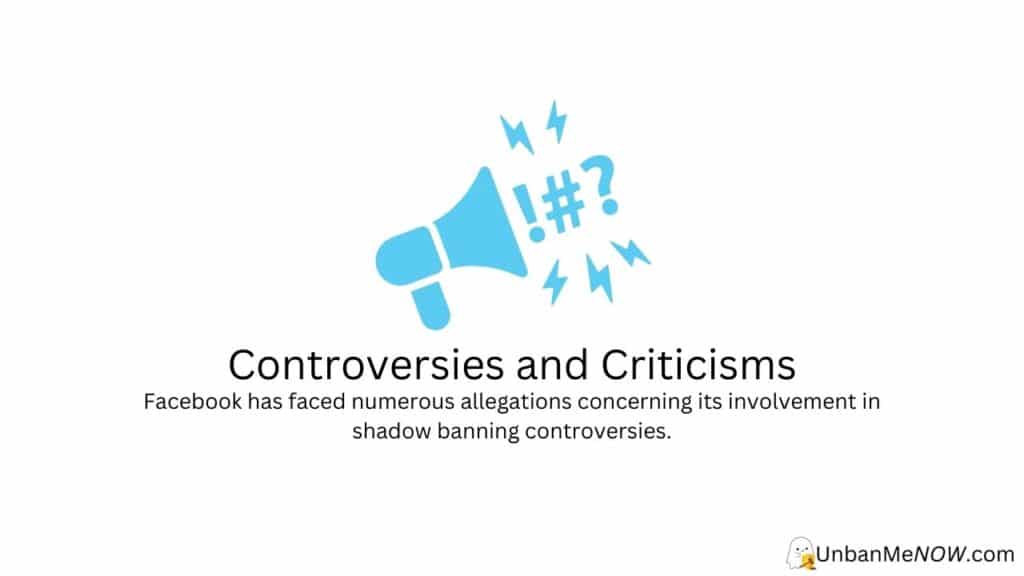
Accusations of Political Bias
A big problem is that Facebook’s shadow bans are often based on politics. Users say that Facebook removes content that criticizes certain ideologies and promotes content that agrees with those ideologies. This has led to worries about opinion manipulation and claims of bias and censorship.
Lack of Transparency and Accountability
Shadow bans on Facebook lack transparency and accountability, making it difficult for users to understand why content is hidden. This opacity raises concerns about fairness, as users cannot determine or challenge the reasons for content removal.
Censorship Concerns and Implications for Freedom of Speech
Facebook’s shadow banning has raised concerns about censorship and its impact on free speech. Critics argue that hiding content silences voices and ideas, hindering open dialogue and potentially harming democracy.
Strategies for Users to Avoid Shadow Banning
Users should do these things to avoid being “shadow banned” on Facebook:
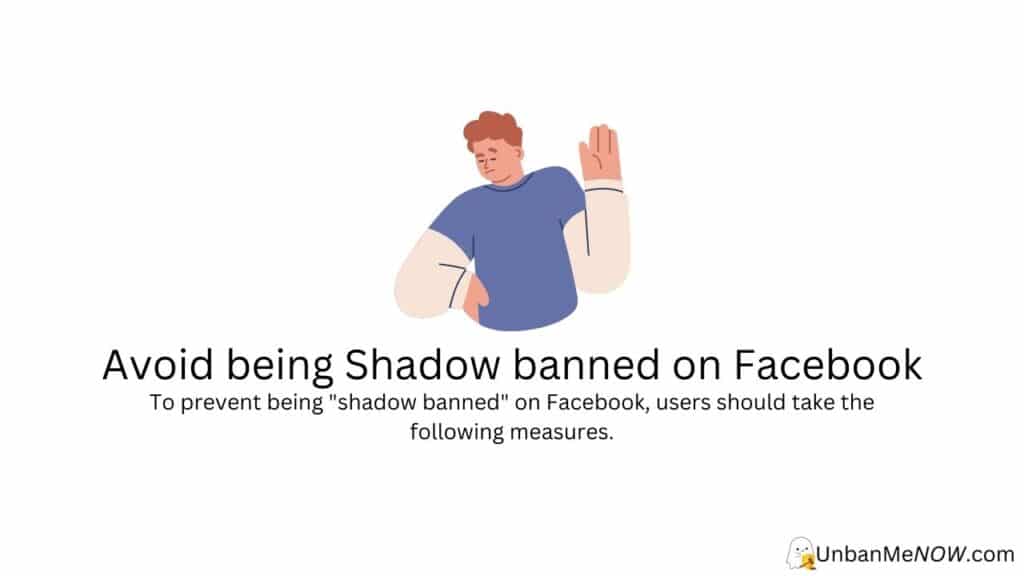
Adhering to Facebook’s Community Guidelines
To avoid being shadow-banned, the first step is to know Facebook’s rules for the community. These rules explain what kind of behavior and content are allowed on the platform and let users know what kind of behavior is considered appropriate. Some of the most important rules to remember are:
- Avoiding hate speech and harassment
- Abiding by Facebook’s policies on adult content
- Avoiding spam-like behavior
By knowing and following Facebook’s community guidelines, users can avoid doing things that could cause the site’s shadow banning algorithm to kick in.
Regularly Reviewing and Updating Privacy Settings
Another important thing you can do to avoid being shadow-banned is to check and change your privacy settings often. Facebook’s algorithm uses a user’s activity and behavior to decide which of their posts are shown to other people. By checking and changing your privacy settings often, you can make sure that your information isn’t being shared without your permission and that the algorithm isn’t misinterpreting your actions.
Some important privacy settings to check and change are:
- Controlling who can see your posts
- Controlling who can contact you
- Controlling what information is visible on your profile
Engaging in Authentic Interactions
Lastly, if you don’t want to get shadow banned on Facebook, it’s important to have real conversations and stay away from spam-like behavior. The algorithm of the platform is designed to find and hide content that it thinks is spammy or of low quality. This includes content that repeats itself, gives the wrong impression, or is meant to trick the algorithm.
Get Rid of the Facebook Shadowban using UnbanMeNow
Fixing a Facebook shadowban is simple with UnbanMeNow. Follow these steps for a detailed guide:
Choose the Platform: Go to the UnbanMeNow website and select Facebook as your platform. Then, click the “Unban Me Now!” button.
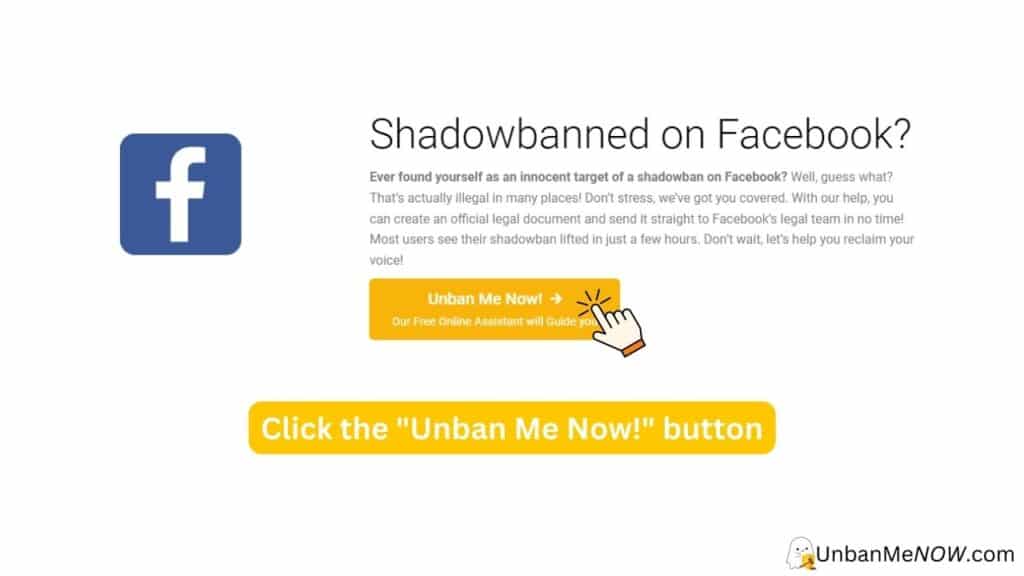
Provide Some Info: Give your full legal name, email address, and platform username linked to your account. This information is necessary for UnbanMeNow to locate your account.
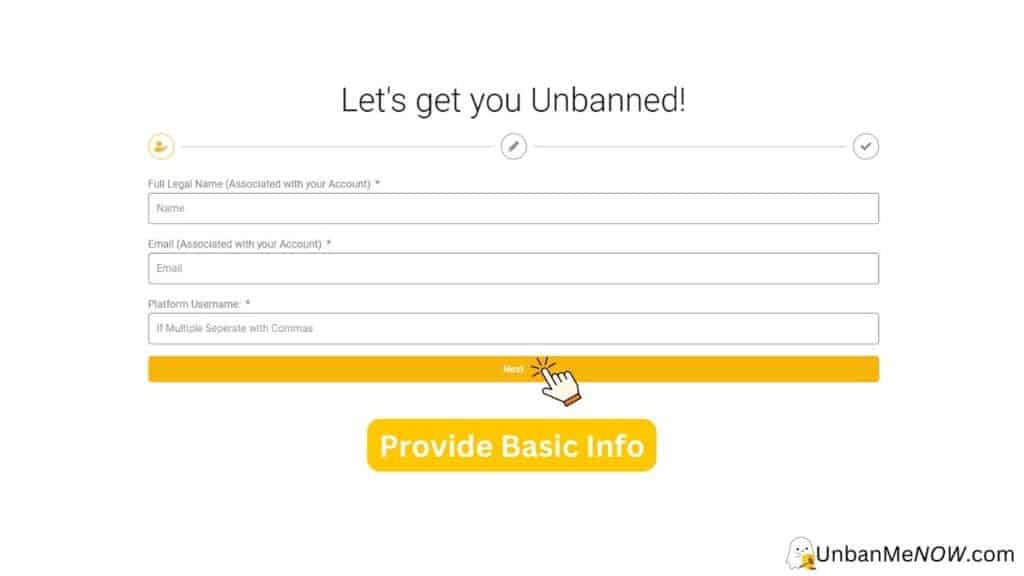
Explain Your Ban: Share details about what led to your shadowban and why you think it happened. Also, mention any actions taken to resolve the issue.
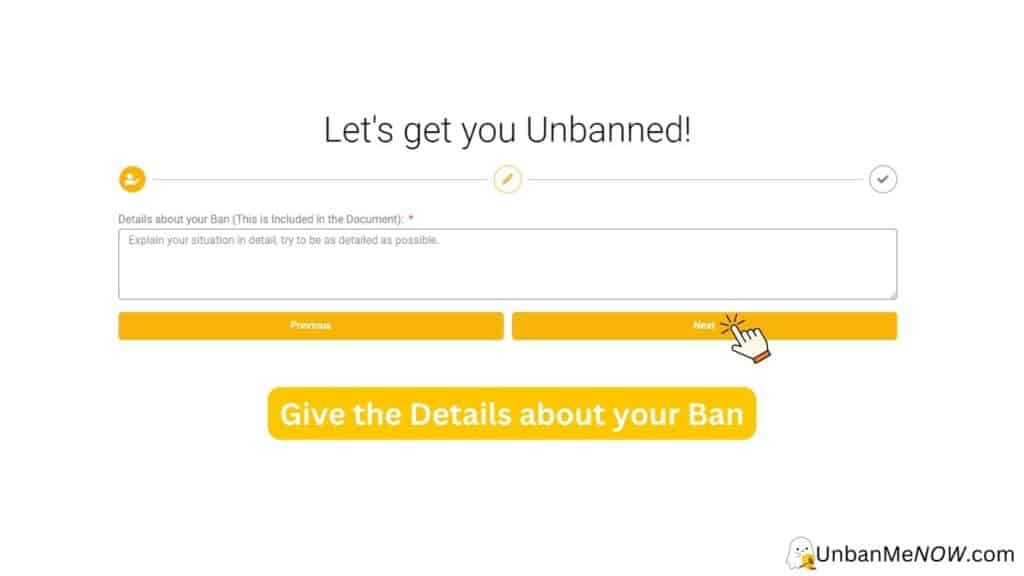
Select Your Situation: Pick the predicament that best fits your situation. This will help UnbanMeNow tailor the document to your needs. Agree to the Data Privacy Policy by checking the boxes, and confirm that all information provided is accurate. Then, click the “Create Document” button.
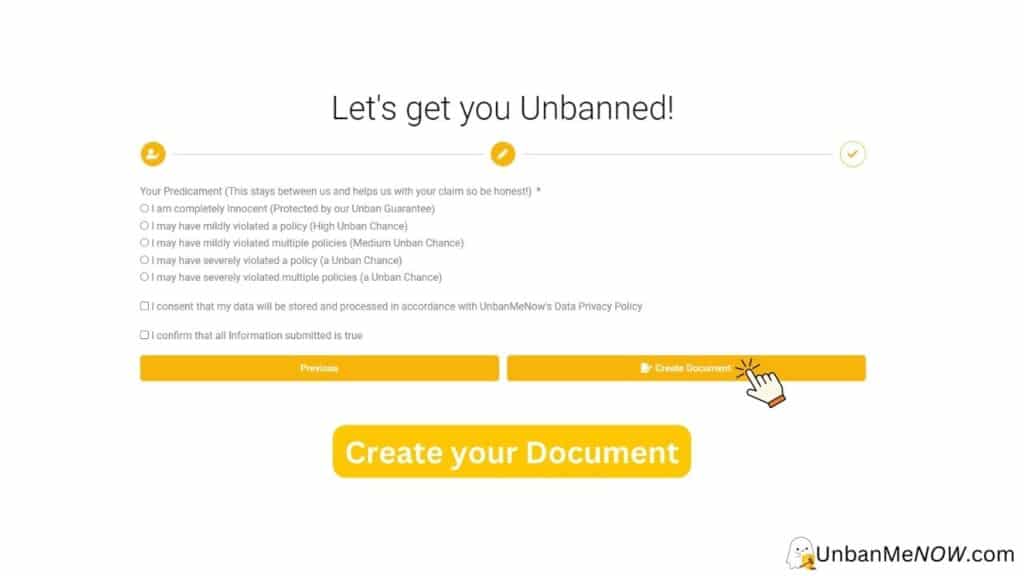
Unban from Facebook Shadowban: Download the document and submit it. After submitting, wait for a few hours for UnbanMeNow to lift the shadowban.
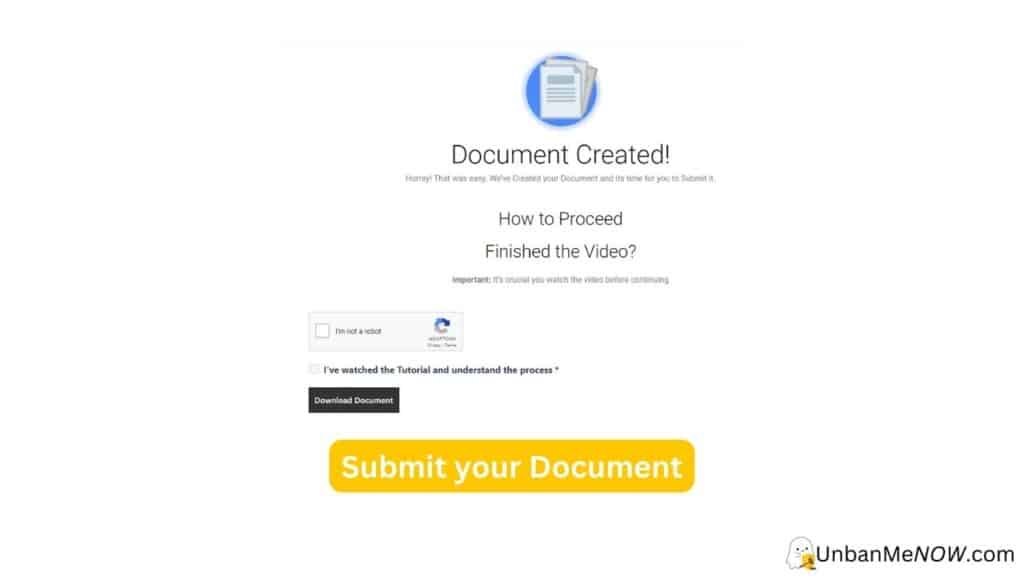
The Bottom Line
Shadow banning on Facebook is still a controversial practice that can have big effects on users and online communities. Even though the company may be trying to make the internet a safe and healthy place, the lack of transparency and the possibility of subjective bias in content moderation raises concerns about free speech and digital rights. Shadow banning has effects that can’t be seen by the average user. These effects affect the way online communities work as a whole, as well as the spread of information and different points of view.
People Also Asked
Shadow banning on Facebook is a controversial subject that has been talked about a lot among social media users. Many people want to know what shadow banning is and how it affects their Facebook account. Here are some of the most common questions about Facebook’s shadow bans:
How can I tell if my account or content has been shadow banned on Facebook?
If you want to know if your Facebook account or content has been shadow banned, look for signs that your posts or account aren’t getting as much attention as they used to. For example, if your posts no longer show up in news feeds or if you get fewer likes and comments than usual, it’s possible that your account or content has been shadow banned.
How does shadow banning on Facebook differ from account suspension or content removal?
Shadow banning on Facebook is different from suspending an account or removing content in that your account or content is still visible to you, but it’s not visible to other people. When your account is suspended, you can’t access it on Facebook. When content is removed, certain pieces of content are taken off the platform.
Does Facebook have an official policy on shadow banning, and where can I find more information about it?
Shadow banning is not something that Facebook has a policy on, and the company has said that it does not do this. But it’s possible that algorithmic decisions made by the platform could affect your account or content and make them less visible. If you think that shadow banning has affected your account or content, you can tell Facebook about it through their Help Center.
